Index funds are a low-cost option for new investors to commence their investing journey while earning “market returns” and saving on “investment fees.”
Using low-cost index funds can also prepare and boost the confidence of beginners for more DIY-type investing with ETFs and other individual investment assets.
Index Funds vs. Mutual Funds
It is easy to get confused by what an index fund is vs. a mutual fund. To put it simply, an index fund is a type of mutual fund designed to track a market benchmark or index (such as the S&P/TSX Composite or S&P 500) and to replicate its return.
For example, if an index fund is designed to track the S&P 500, it may also contain the 500 stocks that are in the S&P 500 index or use other strategies to mirror the holdings of the index. The fund will also attempt to generate the returns of the S&P 500, less any fees incurred.
Index funds are passively managed, and fund managers only need to make adjustments when required due to changes to assets in the benchmark index.
Traditional mutual funds, on the other hand, are actively managed. The fund manager of a mutual fund tries to beat the benchmark index (e.g. S&P 500) and will buy and sell asset holdings with the intent to outperform the market.
Advantages of Index Funds
1. Low Cost: Fees charged by index funds are lower than the average mutual fund. This is because index fund managers utilize a passive strategy that involves less buying and selling and overall lower transaction fees. The lower fees can also translate into higher returns for investors.
2. Higher Return Potential: Unfortunately, the active management strategy by mutual funds does not always yield the expected results. Studies show that after adjusting for survivorship and other biases, 80% or so of mutual funds underperform their benchmark index every year. Essentially, you have just paid them high fees for nothing.
On the other hand, an index fund is expected to generate market returns minus fees. For example, an index fund that is tracking the S&P 500 may return 7.10% in a year that the S&P 500 (benchmark or market index) returns 7.16%. The difference of 0.06% accounts for fees and other tracking errors.
3. Diversification: Unlike buying individual stocks, index funds can provide you with even better diversification than a mutual fund offers and at a lower cost.
Depending on the type of index funds (one-fund portfolios or individual funds), you may need to rebalance your portfolio on an annual basis to ensure your asset allocation continues to correspond with your risk tolerance and return objectives.
4. Low-Minimum Investment Requirement: Index funds (like mutual funds) are great for beginners who need a low-barrier entry into investing. You can generally open an index fund account for as low as $100 and set up automatic contributions from your bank account for as low as $25.
5. Tax Advantage: Index funds conduct fewer buy and sell transactions than actively-managed mutual funds. This results in a lower turnover of assets, fewer capital gains distributions, and tax burden.
Update: Since writing this article in 2018, we have seen ETF providers develop simple all-in-one ETFs you can use in your portfolio without needing to rebalance. I personally prefer these low-cost ETF options compared to traditional index funds.
That said, you should watch out for brokerage commissions when you purchase ETFs using a discount broker. If you make frequent small purchases, your fees add up and eliminate your investment fees savings.
Consider using a low or no-commission brokerage platform like Questrade or Wealthsimple Trade.
Examples of all-in-one ETF portfolios include:
- Vanguard Growth ETF Portfolio (VGRO)
- Vanguard All-Equity ETF Portfolio (VEQT)
- Vanguard Balanced ETF Portfolio (VBAL)
- iShares Core Growth ETF (XGRO)
- iShares Core Equity ETF Portfolio (XEQT)
Best Low-Cost Index Funds in Canada
New investors can purchase index funds from all the major banks and some credit unions, and online banks.
One-Fund Solutions
There are “one-fund solutions” that are already designed to suit your risk tolerance and investment objectives (such as conservative (income-focused and low-risk), balanced (low to medium risk), and growth (medium to high risk).
These funds are automatically re-balanced and require zero effort on your part. There are also no commission fees when you purchase shares/units.
Examples of one-fund solutions include:
Their fund offerings include:
- Balanced Income Fund: 70% fixed income amid 30% equities (stocks)
- Balanced Fund: 40% fixed income and 60% equities
- Balanced Growth Fund: 50% fixed income and 50% equities
- Dividend Fund: 100% dividend equities
- Equity Growth Fund: 100% equities
- The Management Expense Ratio (MER) for Tangerine funds is between 1.05% to 1.07%.
2. TD balanced Index Fund: 50% fixed income and 50% equities; MER is 0.89%.
3. CIBC balanced Index Fund: 40% fixed income and 60% equities; MER is 1.22%.
Individual Index Funds
You can purchase individual index funds and combine them in different proportions to make up your own diversified portfolio. The most popular in this category of funds is the TD e-Series Index Funds.
Their index fund offerings include:
- TD Canadian Index – e (TDB900): MER 0.32%
- TD Canadian Bond Index – e (TDB909): MER 0.51%
- TD U.S. Index – e (TDB902): MER 0.34%
- TD International Index – e (TDB911): MER 0.49%
A sample balanced index portfolio using TD e-Series funds is as follows:
| Name | Code | Allocation | MER |
| TD Canadian Bond Index Fund – e | TDB900 | 40% | 0.51% |
| TD Canadian Index Fund – e | TDB900 | 20% | 0.32% |
| TD U.S. Index Fund – e | TDB902 | 20% | 0.34% |
| TD International Index Fund – e | TDB911 | 20% | 0.49% |
| Average Weighted MER | 0.43% |
Related: A Sample TD e-Series RESP Portfolio
- RBC Canadian Bond Index Fund (RBF700): MER 0.70%
- RBC Canadian Index Fund (RBF556): MER 0.66%
- RBC U.S. Index Fund (RBF557): MER 0.66%
- RBC International Index Currency Neutral Fund (RBF559): 0.61%
A sample balanced index portfolio using RBC index funds is as follows:
| Name | Code | Allocation | MER |
| RBC Canadian Bond Index Fund | RBF700 | 40% | 0.70% |
| RBC Canadian Index Fund | RBF556 | 20% | 0.66% |
| RBC U.S. Index Fund | RBF557 | 20% | 0.66% |
| RBC International Index Currency Neutral Fund | RBF559 | 20% | 0.61% |
| Average Weighted MER | 0.66% |
- Scotia Canadian Bond Index Fund (BNS186): MER 0.61%
- Scotia Canadian Index Fund (BNS181): MER 0.77%
- Scotia U.S. Index Fund (BNS182): MER 0.86%
- Scotia International Index Fund (BNS187): MER 1.03%
The Scotia index funds above belong to their Series D offerings.
Rebalancing a Portfolio of Index Funds
When you put together an investment portfolio using these individual index funds, it is essential to look at your asset allocations at least once every year for any drifts away from your preferred percentages.
Rebalancing is easy and involves buying more of an asset that is lagging in performance and/or selling some investments that have performed well.
Closing Thoughts
An index fund is great for new investors who want to learn the ropes of DIY investing and lower their investment fees. You can start investing with a small amount and set up regular weekly/monthly contributions as low as $25.
When your trading confidence grows, and your portfolio is larger, you can step up your game with low-cost ETFs purchased via an online discount brokerage.
Alternatively, you can save on investment fees and avoid the hassle of re-balancing by using a robo-advisor.
Related:
- Guide To Robo-Advisors in Canada
- Commission-Free Discount Brokerages in Canada
- All-in-One ETF Solutions in Canada
- Everything You Need to Know About GICs
- How to Generate Income From an RRSP in Retirement
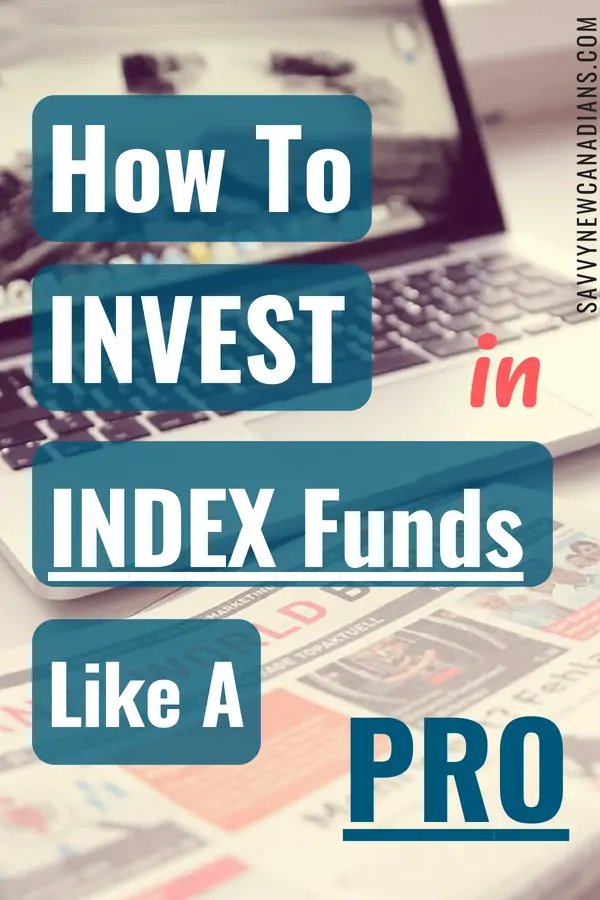
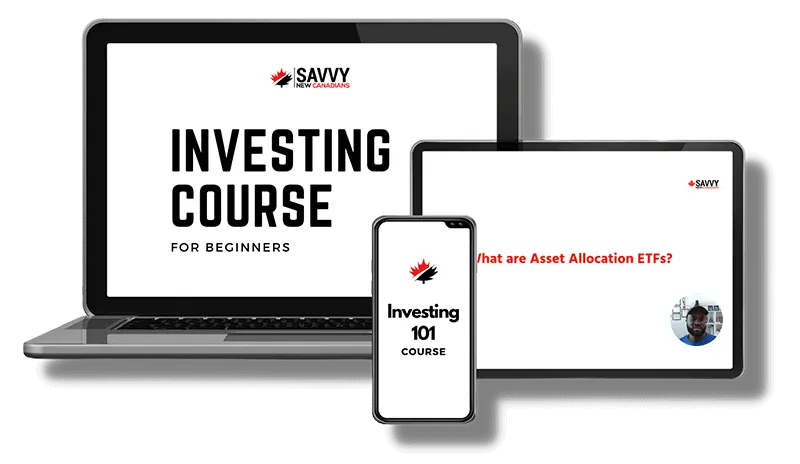
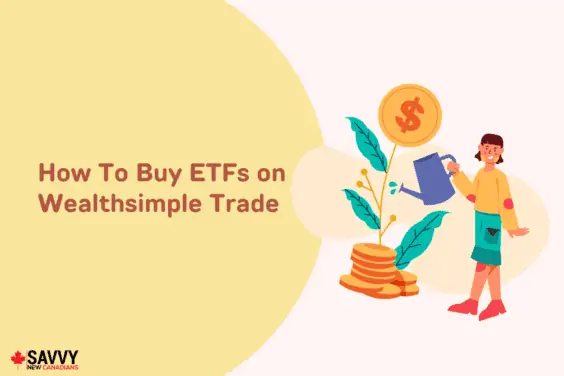

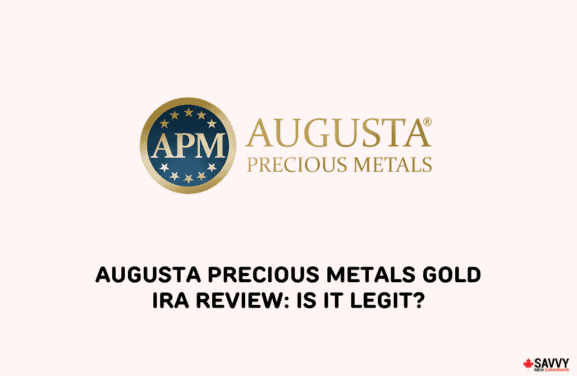

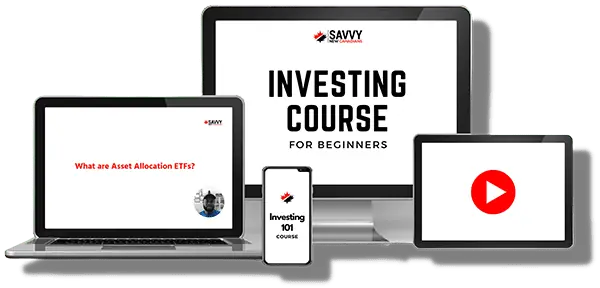

If you start with TD e-series and then are ready to “step it up” to ETFs, do you just leave the e-series funds as part of the portfolio or do you sell all the e-series buy the ETFs to create a diversified portfolio?
@Stephanie: I just left the eSeries as a part of my portfolio after moving to ETFs.
Great blogpost, Enoch!!! I have finished reading Unshakeable by Tony Robbins recently and I had a hard time finding more information about investing in index funds in Canada. But then I found your post! Thank you!!!
@Ahmed: You are welcome – I’m glad you found the blog useful!
Cheers
Thanks for this informative article.
Is there a difference between the RBF700(RBC Canadian Bond Index Fund) and the RBF900? I noticed they have the exact same name, but the MER is lower than RBF700 at .16% and it’s listed as Series F. Does the series letter have something to do with this? Any clarity would be super helpful. Thanks again!
@Lis: Yes, it has to do with the series. Basically, they are the same funds, however, the fees structure and how you can purchase the funds are a bit different. These two links below may shed some light:
https://www.getsmarteraboutmoney.ca/invest/investment-products/mutual-funds-segregated-funds/mutual-fund-series/
https://www.rbcgam.com/en/ca/learn-plan/types-of-investments/how-does-fee-based-investing-work/detail
Summary: most retail investors buy Series A funds.
These RBC Index Funds are no longer available to new investors. Only existing unit holders can access the RBC Index funds (for now). The new funds at RBC are more expensive.
@AreKay: Thanks for highlighting this.